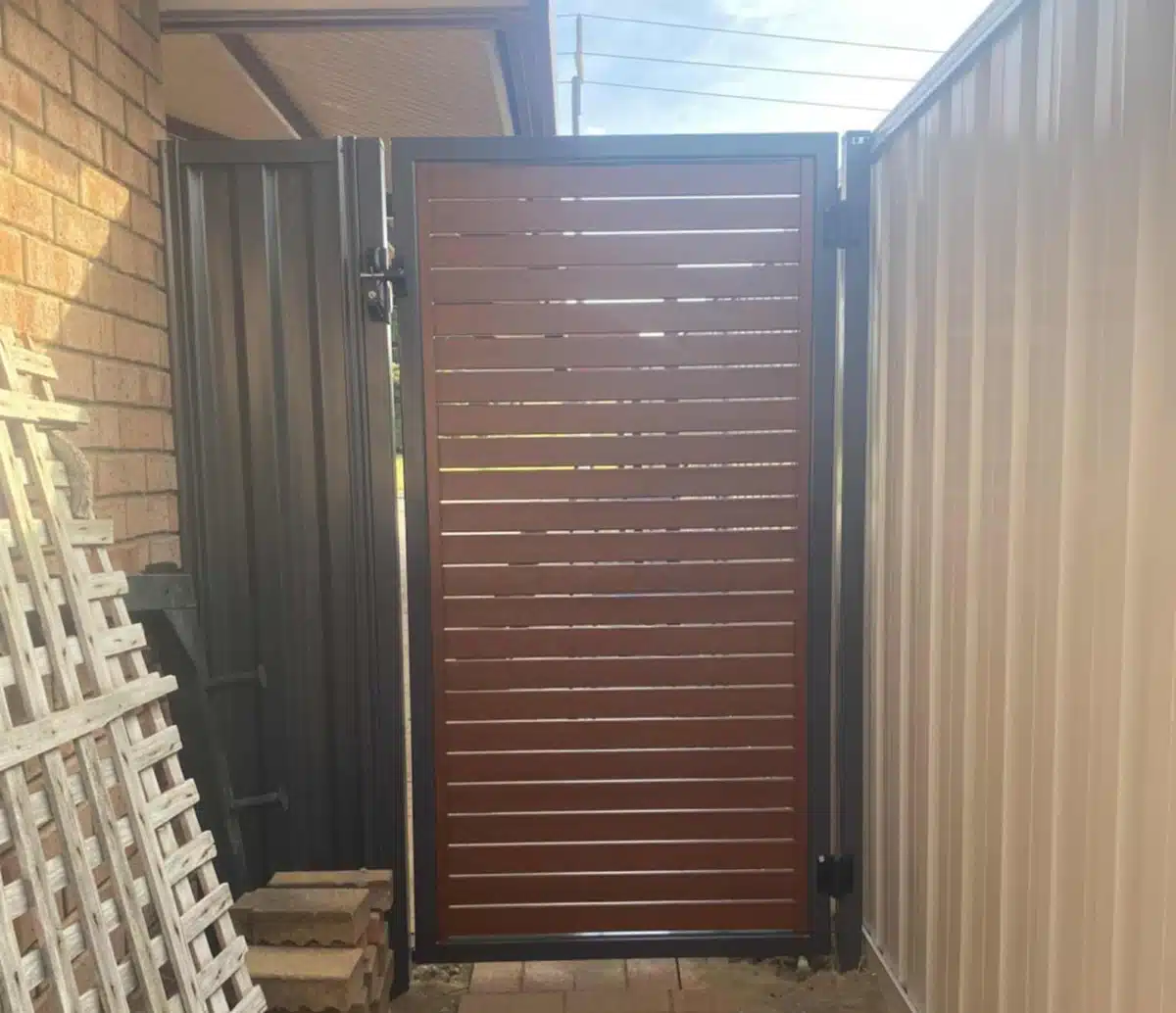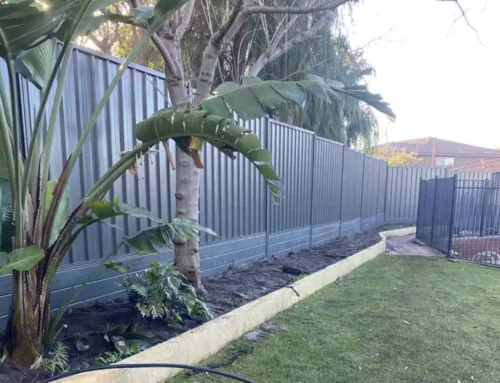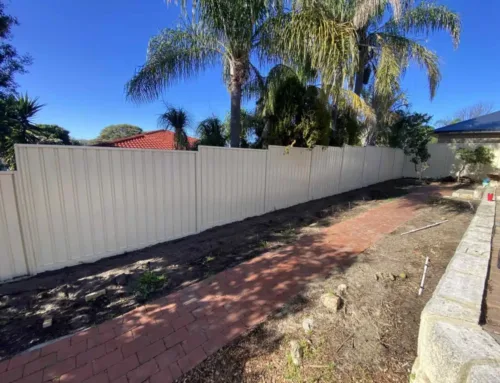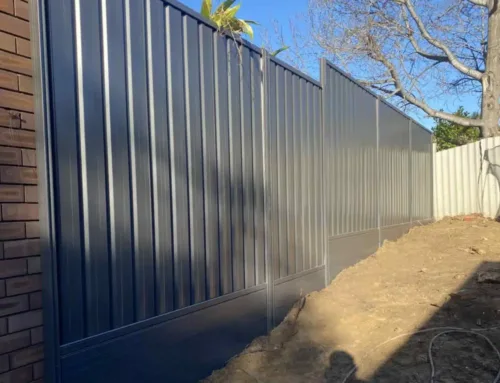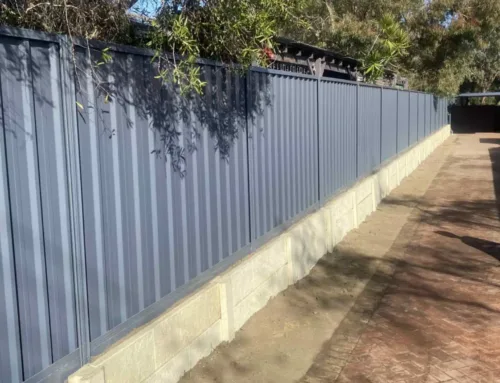admin
A well designed fence is one of the most effective security measures a homeowner can install. A security fence deters intruders, controls access, protects pets and children, and can improve privacy and property value when it complements the house. The key is to choose fencing materials, a fence design and security features that work together, then install them to a clear specification that meets local council regulations. This guide explains how to plan a secure perimeter for a Perth home using practical choices that look good, require minimal maintenance and deliver excellent security in daily use.
What makes a fence “secure” vs just decorative?
A secure fence resists climbing, cutting and levering, and it is anchored in engineered footings. A decorative perimeter fencing marks a boundary and adds visual appeal, but it may include footholds, wide gaps or weak fixings that reduce security.
Start by defining the goal for each boundary. The side and rear boundaries usually focus on privacy fencing and keeping a secure perimeter. The front boundary often needs visibility for the street and driveway while signalling a limit to casual access. A true security build specifies post size, footing depth, centres, rail layout and panel rigidity, along with gate hardware that locks cleanly and cannot be lifted. When comparing fencing options, ask for material grades, powder coating systems, fixings and latch models in writing so the fence for security is not compromised by substitutions on the day. If you want one accountable team to manage scope and quality assurance across all property lines, begin with a conversation about your project under Services.
Which fence materials are best for security?
Steel fencing with solid panels, such as Colorbond, creates a gap free barrier that removes hand and toe holds. Aluminium fencing in tubular formats with pressed spear tops deters climbing while preserving passive surveillance. Composites can deliver privacy and mass when framed on robust posts and rails.
For most residential fences, Colorbond fencing systems provide a smooth, rigid face with no external rails, which makes climbing difficult and cutting noisy. Where you prefer visibility, aluminium tubular with close picket spacing and spear tops discourages overreach and signals risk to potential intruders. Aluminium slat fencing can be tuned for screening and airflow with horizontal slats, but keep gaps tight and place any horizontal rails on the inside face. Composites work well when you want the natural aesthetic of timber without the ongoing maintenance of timber fencing. They need heavier posts and rails to prevent flex. For Perth climate performance and long life coatings, review Colorbond Fencing Benefits before you finalise the specification.
What fence height deters intruders most effectively?
A 1.8 metre security fence is a strong residential baseline. Where local laws allow, taller fences of 2.1 metres reduce climb success further. Height is most effective on smooth faces with tight gaps and no external footholds.
Confirm relevant local regulations for front, side and rear boundaries. Front fences are often capped at a lower height to preserve sight lines. Side and rear fences typically allow the 1.8 metre standard, with some councils permitting more in specific conditions. If you want to add toppers such as curved spear extensions, check rules before ordering. Seeing finished heights in context helps, so browse the Gallery for ideas that match your house style.
Does privacy improve security or create blind spots?
Solid panels block sight lines and deter opportunistic attempts. On tight sites they can also create blind sides, so pair a solid fence with lighting and cameras that remove shadows and watch approaches.
If you prefer passive surveillance from the street, semi privacy designs are a good balance. Aluminium slat fencing with narrow gaps filters views while maintaining community awareness. In rear gardens, solid panels provide privacy for outdoor living and discourage casual climbing. Where your fence line is close to windows or side paths, add motion sensor lighting at gate points and corners to enhance security , and position CCTV cameras to cover latches and driveway entries.
See modern screening options with adjustable gaps under Aluminium Slat Fencing.
What are anti climb fence designs?
Anti climb designs remove purchase points on the attack face. Use vertical pickets with flush rails on the outside, tight spacing, and pressed spear or curved extensions to deter grip and overreach. Avoid horizontal rails or wide slat gaps on the exterior face.
A well specified tubular fence puts rails on the inside, uses narrow picket centres, and aligns spear tops along the boundary to block overhand grips. Where privacy is needed, a solid fence with a smooth sheet face and a clean edge at the base removes footholds entirely. If the boundary also forms part of a pool fencing zone, choose compliant components and check latch heights and gap rules. For a comparison of fence systems used around pools and side yards, read Pool Fencing Options: Glass, Aluminium, Stainless Steel.
Do I need security gates if I already have a fence?
Yes. Gates are the usual weak point. Specify heavier posts, quality hinges, anti lift features, lockable latches and a ground stop or drop bolt on double gates. Match gate height and infill to the fence.
For driveway entries, consider automated gates with keypads or remote access so the opening is controlled and recorded. Use welded frames for rigidity, position hinges on the secure side, and install shrouds or covers on lock fixings. Gate gaps should be small and consistent from top to bottom. For coordinated gate designs across Colorbond, aluminium and composite styles, explore Residential Gates With Your New Fence.
How does lighting and cameras integrate with security fencing?
Plan conduits and power while posts and footings are going in so cables hide inside the structure. Aim lights along the fence to erase shadows, then angle cameras to see approaches, latches and driveway entries without glare, adding additional security features .
Motion sensor lighting near gates and corners deters intruders and improves footage quality at night. Place cameras high enough to avoid tampering and low enough to read faces. If you have an existing fence, tidy upgrades are still possible by adding surface conduits at internal corners and using bracketed mounts. Where a gate sags or a latch stalls, schedule a tune up under Fencing Repairs and bundle minor electrical adjustments at the same time.
Are there pool or HOA rules that limit security fence options?
Yes. Pool barriers must meet height, gap and latch standards, which can reduce your choice of toppers or infills. Estates and HOAs can limit colours, materials and front boundary heights.
Always confirm estate guidelines and pool rules before ordering custom panels or gates. If you want both privacy and compliant spacing near a pool area, your contractor can suggest slat patterns and latch models that meet the requirements without compromising the look. For local styles and compliance ideas, check Perth Pool Fencing Trends.
What is the difference between residential and commercial security fencing?
Residential projects balance privacy, appearance and pet safety along property boundaries . Commercial sites emphasise access control, clear zones around the fence, taller heights and heavier posts.
Workplaces often need compliant signage, keypad or swipe access and monitored gates. The fence material may climb in grade to high quality steel or closer mesh, and anti climb features become standard rather than optional. If your home backs onto a public reserve or a high traffic lane, borrowing selected commercial details such as heavier posts, continuous rails and anti lift hinge sets can deliver excellent security without looking industrial. For a private yet tidy street front, consider a Colorbond face with tubular returns as outlined under Colorbond Fencing.
Can landscaping enhance fence security?
Yes. Thorny or dense shrubs in narrow beds deter approach, raised planters narrow the path along panels, and regular pruning protects camera sight lines. Keep trees, bins and climb aids away from the fence so height advantages remain effective.
Climbing plants look great on some boundaries, but they can compromise anti climb features if they form footholds. If you use greenery, keep it on the inside face and prune it back from rails and latches.
Are chain link fences secure and do privacy slats change that?
Chain link fencing is durable and cost effective. It needs small mesh, tight ties and a firm top rail to resist toe holds. Privacy slats can add screening, but some profiles create purchase points that aid climbing.
Where rules permit, a pressed spear or barb treatment at the crown raises the effort for intruders. For pure security in suburbia, a solid fence with smooth sheet faces often outperforms chain link with slats. If you prefer a chain link look for pets or side yards, pick small mesh, keep the top tight and avoid slat profiles that open hand gaps. For colour matching to your house palette, review approved finishes at Colorbond Fencing Colours to achieve a consistent appearance across mixed materials.
What local codes or setback rules affect security fences?
Corner lots require sight triangles, front fence heights are often lower than side and rear boundaries, and pool barriers have specific latch heights and non climb zones.
Check easements and setbacks before excavation so posts and footings stay inside title. If a boundary bends or the pegs are missing, commission a brief survey to avoid encroachment. For early budgeting and lengths, the Fencing Quote Calculator is a quick way to plan before approvals.
How do dogs and pet runs factor into a security fence plan?
Close bottom gaps, add return panels at gates and choose infills that resist chewing and squeezing. Consider a secondary internal pet run for double containment where you are near roads or open reserves.
Latch heights should be out of reach of clever paws, and self closing hardware helps when kids use side gates. If you love the look of timber fences, remember that pet wear and irrigation increase maintenance. Build and care notes are covered under Timber Fencing so you can weigh the natural aesthetic against upkeep.
Do I need permits for taller or specialised security fencing?
Approvals can trigger when you exceed local height limits or change front boundary treatments. Pool barrier adjustments require compliance inspections.
Keep drawings, product data sheets and colour schedules ready for review. If you are replacing an existing fence that includes legacy materials, plan safe removal and disposal through Asbestos Fence Removal before you book new works. This protects timelines and avoids rework.
What are common intruder tactics and how do fences deter them?
Climbing is discouraged by smooth faces with no footholds, tight picket spacing and spear or angled toppers. Cutting is slowed by rigid sheets and thicker gauges or small mesh. Levering is resisted by deeper footings, larger posts and continuous rails with secure fixings.
If the ground falls away at the base, a shallow trench or exposed edge becomes a lever point. Combine the fence with small retaining where needed so prying tools cannot exploit weak soil. For projects that must pair walls and fencing, see Retaining Wall Recommendations And Material Options.
How to choose the right security fence for your home
Start with a simple security assessment and work boundary by boundary. List the aim for each side of the property. Rear and shared boundaries usually get solid panels for privacy and noise reduction. Street fronts need a balance of deterrence and visual appeal. Side access paths demand clean, lockable gates that close reliably. Once the goal is clear, choose a fence material that fits your climate and maintenance appetite. Colorbond offers minimal upkeep, a smooth face and strong privacy. Aluminium tubular gives visibility and anti climb features with low maintenance. Aluminium slat fencing balances screening with airflow and modern lines.
Standardise the specification in writing. Record height, colour, post size, centres, footing depth, rail layout, infill pattern and gate hardware. Name anti lift features, ground stops, drop bolts and latch models. Add motion sensors, motion sensor lighting and CCTV camera locations to the same plan so conduit runs are straightforward during installation. Ask for a line item scope from your contractor that separates materials, labour and any allowances for rock or tight access. This keeps each quote truly comparable and ensures the fence line that arrives on site matches your intent.
Decide where decorative elements help and where they harm. Decorative elements such as caps, feature posts and colour contrast can enhance street presence and aesthetic appeal , but avoid horizontal rails on the outside face and keep climb aids away from the fence. If you want a picket fence look at the street, use timber picket fencing or aluminium pickets with rail positions and spacing that prevent easy climbing. For a natural aesthetic that still deters intruders, consider mixed materials such as a rendered brick base with Colorbond infills, or a composite front with tubular side returns to maintain visibility.
Plan maintenance and future changes. Property owners often underestimate how much ongoing maintenance shifts real security. A good fence is one that stays plumb and locks smoothly. Systems that require minimal upkeep reduce failure points over time. Colorbond and aluminium need a periodic wash. Timber fence styles look great at the start, but they need regular coatings and minor hardware checks to maintain security benefits. Schedule a quick inspection every season to tighten post caps, lubricate latches and clear vegetation from cameras and lights. Where a panel bends or a hinge sags, book a prompt fix so the secure perimeter remains intact.
Conclusion
Improving security with fencing is about consistent choices that reinforce one another. Pick a climb resistant design at a compliant height for each boundary. Match the fence material to your security needs and the local climate. Specify structure, footings and hardware in writing so installation delivers what you expect. Close the weak point at gates with heavier posts, anti lift hinges and lockable latches. Add motion sensor lighting and CCTV cameras that cover approaches without creating glare. Use landscaping that deters approach rather than helping intruders climb. Confirm council regulations for height, pool barriers and front boundaries before you order custom solutions for panels.
With a clear plan and professional installation, you will end up with a high fence where it matters, clean lines that suit the house, minimal maintenance through the year and real security benefits every day. If you are starting from an existing fence, prioritise the gates and the most exposed sides first, then complete the rest of the perimeter as budget allows. The result is a secure, tidy and cost effective solution that protects what matters and looks like it belongs.


